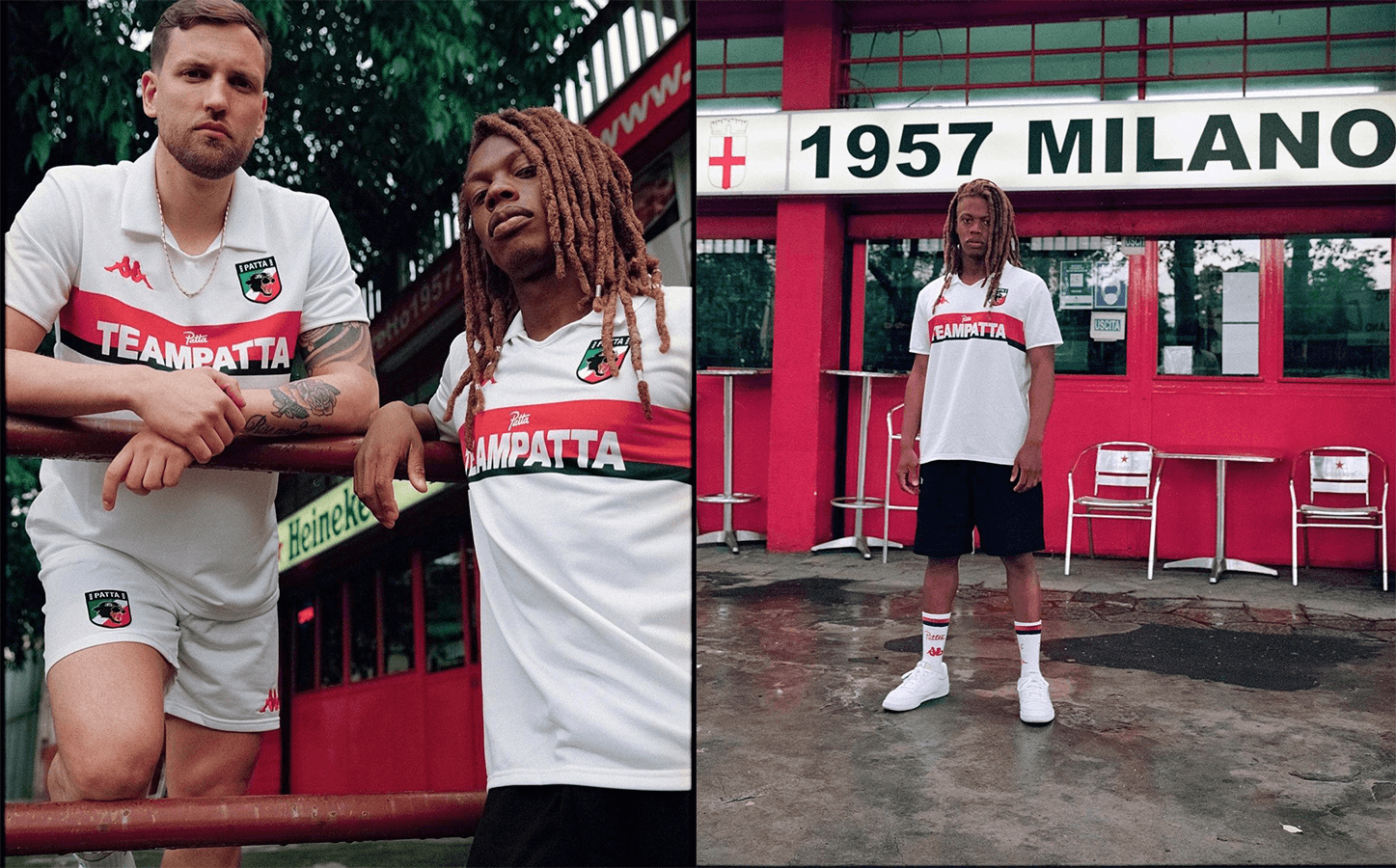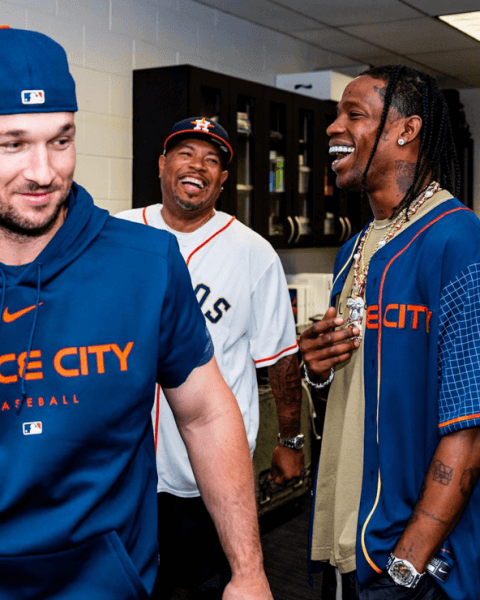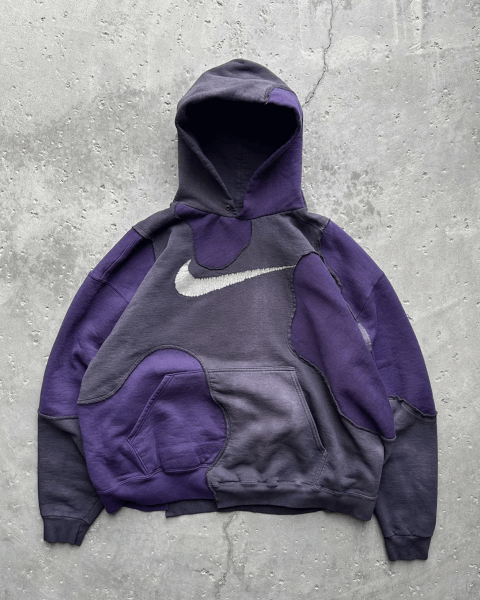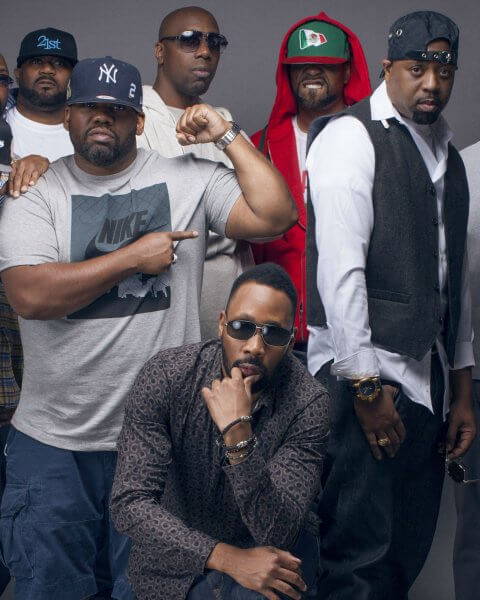
Hiphop, soccer jerseys, and fashion – a collaboration with tradition
sporty fashion
Soccer jerseys (or football, depending on where you live) are a piece of garment worn everywhere – especially outside the field or a sports environment. Apart from the tradition of showing your support to the team of your liking, jerseys have established themselves as a stylish fashion piece that’s here to make a statement, not only for die-hard soccer fans but also for fashion-savvy teens.
With the establishment of sportswear as a daily uniform for many, soccer jerseys, too, have become a piece that can be worn in many settings (except for conservative office attire, of course).
The reason for that is not only the evolution of sportswear in recent decades; it’s also the tight-knit relationship of jerseys with cultural figures and trendsetters. This becomes especially clear when we take a look at hiphop.
Everyone wears jerseys. Even US-rappers like the Migos or Pusha-T, that are more likely to be into football or basketball, have been seen wearing jerseys of iconic European soccer teams. In recent weeks and days, we’ve been bombarded with tons of high-profile collaborations in the fashion and street fashion world that all center on the soccer kit. Why is that so? And what does this teach us about culture? Let’s take a deep dive.
Subscribe to our newsletter for updates on Hiphop business, street fashion, arts, and culture.
The soccer perspective:
Jerseys & athleisure brands
In 1904, the FIFA was founded in Paris. Soccer had made quite the journey before that already, but it took some additional years before the sport became what it is today.
In the beginning, jerseys had one purpose: Identifying the players and the teams. Naturally, it was also a way for fans to do the same. Over the time, the jersey became a staple for soccer-lovers.
Soccer is now a huge global business. From employment in various areas of sports services to production and consumption, the cross-sectional sports industry spills over into large parts of the entire economic system, including downstream industries that would not even exist without soccer.
It’s also a way to connect with people and build relationships. Soccer has a huge cultural significance and thus jerseys have become one of the many products that the culture surrounding the sport gives the people to enjoy. That’s why jerseys are much more than just a sporty garment like joggers. They show the world where you see yourself in the universe of soccer.
The Hiphop perspective:
Rappers & identity
In this Instagram post, Drake writes about the dangers of wearing rivaling jerseys to the wrong place. As he states, he almost started a fight at a bar, probably because they did not welcome the team he was wearing there.
Drake’s anecdote precisely describes the meaning that a jersey can have. Drake, who is a self-proclaimed sports-fan is one of the many rappers that love to wear soccer jerseys. But it’s not only Drake, it’s the entire culture: Migos, Pusha-T, Tyler, The Creator and many more are rocking soccer jerseys. And these are just the American ones.
In an interview with the soccer platform COPA90, Pusha-T explained the appeal of jerseys through their value.
“The football jersey is a hybrid of leisure and luxury”
Jerseys are very much sportswear – after all, their whole origin is the sport. But Jerseys are also the work of (soccer-)culture and sports brands like adidas, Puma, Nike, and more coming together with the teams to create the clothing and collaborate with players. Even if made for the street, they need to meet certain standards – thus giving them a certain quality.
The same backstory
In Germany we have the likes of Celo & Abdi, Nimo, Luciano, Capital Bra, and many more wearing this piece of clothing. Basically, it’s everyone. And they’ve been doing it since primary school.
In an interview with Vice, Nimo explained the connection between soccer and hiphop. As he states, the connection mostly stems from the cultural and class backgrounds of many rappers who dreamt about living the dream. To play soccer, you need little: just a ball and a space to play.
“German rappers mostly wanted to become soccer players because they grew up on the football field. Many of us didn’t have money for original jerseys. But if you ever had one, you wore it like a normal piece of clothing, even with jeans.”
It’s the rags to riches trope that runs through hiphop. For many kids, their love for soccers started with the icons they adored; Stars like Cristiano Ronaldo.
Just like hiphop, soccer gives kids hope and ambition. Their significance for the youth connects both cultures.
A perfect symbiosis
Because of their many parallels, hiphop and soccer are a match made in heaven. While soccer has established itself as one of the most important sports in the world, hiphop is the leading genre and cultural movement for the youth.
Just like the sport, hiphop has many cultural icons and trendsetters who inspire kids and teens to be creative and to follow certain brands and movements. And these trendsetters – Artists, brands, and collectives – take soccer-culture to a new level.
Recent collaborations like the adidas x Balenciaga jerseys or the Patta x Kappa collab center around either making an own version of the jersey or paying homage to a culture that has moved millions of people. And there are many more current projects of the same nature; Fendi’s partnership with AS Roma, the PSG collection with Nike or soccer players presenting high-fashion campaigns.
Soccer loves working with street fashion, and street fashion loves soccer. After all, it’s a beneficial relationship for both: Soccer gets cooler and even more accessible to those who don’t really care about the sport. And street fashion can show a culture that stems from a similar background its admiration.
Together, they create a product that holds so much cultural value that even those who just want a sporty look will consider buying a jersey. So what are you waiting for? It’s time to create your own cultural moment.



